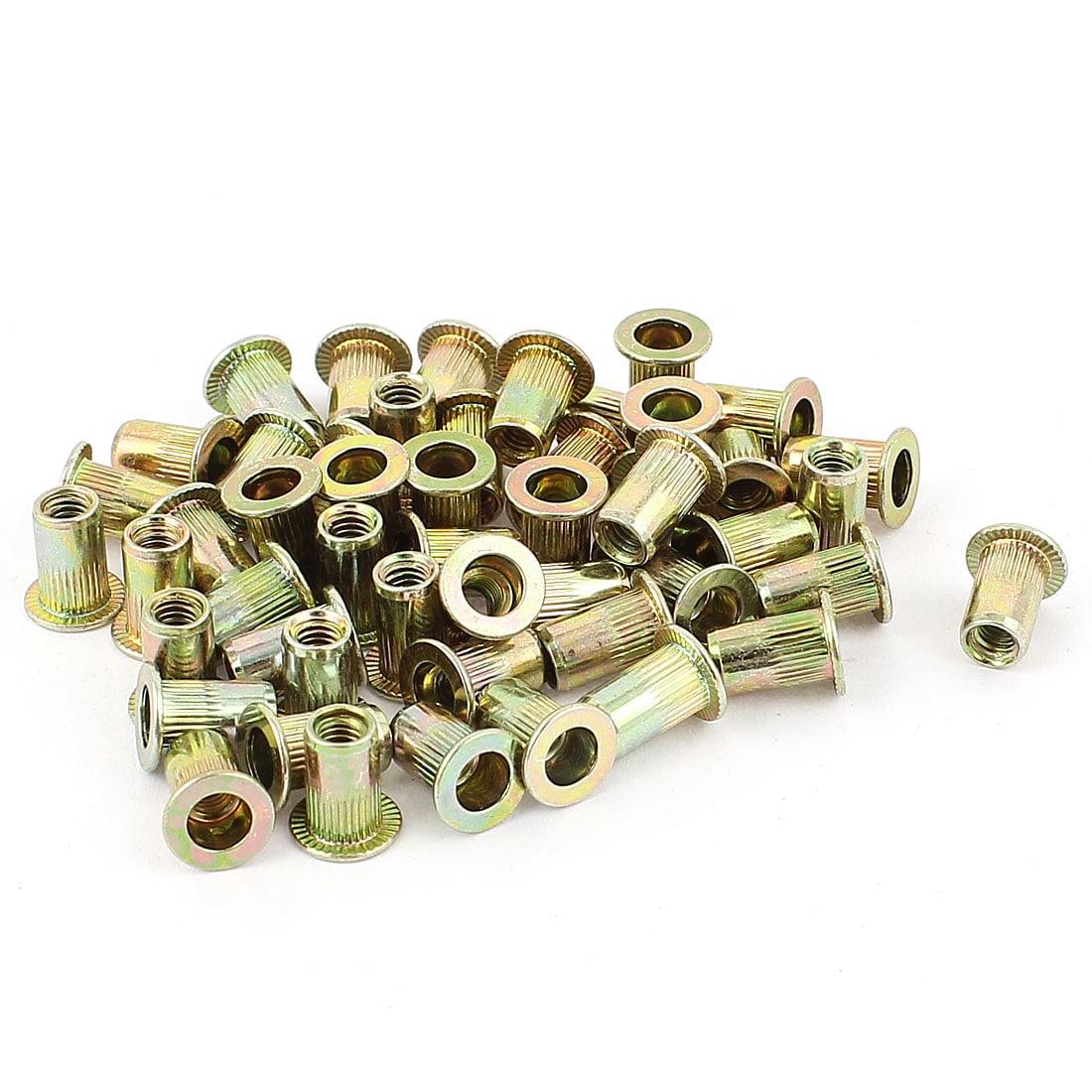

High volume, medium volume and low volume installation options (and price points) are available to meet the requirements demanded by any type of installation environment.
#RIVET NUT INSERT MANUAL#
Rivet nuts can be installed by using pneumatic, hydraulic, battery operated, lever-operated and manual wrench-operated installation tools. Threaded Nut Inserts are the Perfect Fasteners for Many Industries:

So many industries use threaded nut inserts for points of attachment in their products, and consumers have been known to use these inserts for after-market modifications. Rivet nuts don’t need to be welded, use low cost installation tooling, are friendly to parent application finishes, can be drilled out without damaging the parent application, decrease the number of other fasteners needed in an assembly, and are manufactured to “highly engineered, tight tolerance” specifications. Threaded nut inserts (also known as rivet nuts) borrow many of the best advantages from other threaded fasteners (such as weld nuts, nuts, bolts, self-tapping screws, and pressed inserts), while leaving the negatives behind. Threaded nut inserts are easy-to-install (no welding), reliable (generally stronger than the parent material), offer strong threads in weak or thin gauge parent applications, and come in a variety of corrosion resistant materials such as aluminum, steel with zinc plating, stainless steel and brass.

That’s where threaded nut inserts come in handy as they are incredibly versatile. This counter-bored, tubular, one-piece rivet has internal threads that is anchored entirely from just the one side of the material in which it’s installed.ĭepending on the application, finding a fastener that works with thin materials can seem impossible. As a variation of the standard rivet, a threaded nut insert, also known as a blind rivet nut or rivet nut, is a mechanical fastener.


 0 kommentar(er)
0 kommentar(er)
